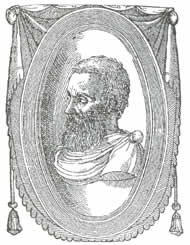Related Research Articles

"Sleeping Beauty", also titled in English as The Sleeping Beauty in the Woods, is a fairy tale about a princess cursed by an evil fairy to sleep for a hundred years before being awakened by a handsome prince. A good fairy, knowing the princess would be frightened if alone when she wakes, uses her wand to put every living person and animal in the palace and forest asleep, to awaken when the princess does.

Giovanni Francesco "Gianfrancesco" Straparola, also known as Zoan or Zuan Francesco Straparola da Caravaggio, was an Italian writer of poetry, and collector and writer of short stories. Some time during his life, he migrated from Caravaggio to Venice where he published a collection of stories in two volumes called The Facetious Nights or The Pleasant Nights. This collection includes some of the first known printed versions of fairy tales in Europe, as they are known today.

Diamonds and Toads or Toads and Diamonds is a French fairy tale by Charles Perrault, and titled by him "Les Fées" or "The Fairies". Andrew Lang included it in The Blue Fairy Book. It was illustrated by Laura Valentine in Aunt Louisa's nursery favourite.

"The Three Little Men in the Wood" or "The Three Little Gnomes in the Forest" is a German fairy tale collected in 1812 by the Brothers Grimm in Grimm's Fairy Tales. Andrew Lang included it in The Red Fairy Book (1890) as "The Three Dwarfs," and a version of the tale appears in A Book of Dwarfs (1964) by Ruth Manning-Sanders.

Princess Belle-Etoile is a French literary fairy tale written by Madame d'Aulnoy. Her source for the tale was Ancilotto, King of Provino, by Giovanni Francesco Straparola.
"The Pig King" or "King Pig" is an Italian literary fairy tale written by Giovanni Francesco Straparola in his The Facetious Nights of Straparola. Madame d'Aulnoy wrote a French, also literary, variant, titled Prince Marcassin.
Belle-Belle ou Le Chevalier Fortuné is a French literary fairy tale, written by Madame d'Aulnoy.
Ancilotto, King of Provino is an Italian literary fairy tale written by Giovanni Francesco Straparola in The Facetious Nights of Straparola.
Biancabella and the Snake is an Italian literary fairy tale written by Giovanni Francesco Straparola in The Facetious Nights of Straparola.
Penta of the Chopped-off Hands or The Girl With the Maimed Hands is an Italian literary fairy tale written by Giambattista Basile in his 1634 work, the Pentamerone.
Sapia Liccarda is an Italian literary fairy tale written by Giambattista Basile in his 1634 work, the Pentamerone. It is not known whether he had a specific source, either literary or oral, for this tale.
The Dove is an Italian literary fairy tale written by Giambattista Basile in his 1634 work, the Pentamerone.
Maestro Lattantio and His Apprentice Dionigi is an Italian literary fairy tale written by Giovanni Francesco Straparola in The Facetious Nights of Straparola.
Guerrino and the Savage Man is an Italian literary fairy tale written by Giovanni Francesco Straparola in The Facetious Nights of Straparola.
Vasilisa the Priest's Daughter is a Russian fairy tale collected by Aleksandr Afanasyev in Narodnye russkie skazki.
The Three Crowns is an Italian literary fairy tale written by Giambattista Basile in his 1634 work, the Pentamerone.
"The Three Fairies" is an Italian literary fairy tale written by Giambattista Basile in his 1634 work, the Pentamerone.

The Facetious Nights of Straparola, also known as The Nights of Straparola, is a two-volume collection of 75 stories by Italian author and fairy-tale collector Giovanni Francesco Straparola. Modeled after Boccaccio's Decameron, it is significant as often being called the first European storybook to contain fairy-tales; it would influence later fairy-tale authors like Charles Perrault and Jacob and Wilhelm Grimm.

"Puss in Boots" is a European fairy tale about an anthropomorphic cat who uses trickery and deceit to gain power, wealth, and the hand in marriage of a princess for his penniless and low-born master.
References
- ↑ W. G. Waters, translator, The Facetious Nights by Straparola London: Privately Printed for Members of the Society of Bibliophiles, 1901. 4 volumes.
- ↑ Jack Zipes, The Great Fairy Tale Tradition: From Straparola and Basile to the Brothers Grimm, p 159, ISBN 0-393-97636-X